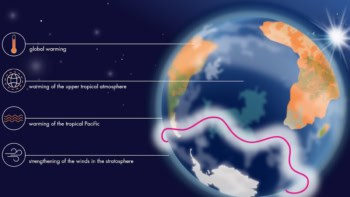Our atmosphere could absorb much more radiation from the Sun than previously thought – with far-reaching consequences for climate modelling and the evaporation and condensation of water.
Earlier this year a group of some 70 scientists spent an intense week in the foothills of the Rocky Mountains in Colorado reviewing the current understanding of the radiation budget of the atmosphere. The meeting, the latest in the series of Chapman Conferences organized by the American Geophysical Union, focused on the so-called anomalous absorption of solar radiation in the atmosphere.
Evidence gathered over the past 20 years has increasingly shown that the absorption of solar radiation predicted by models is significantly less than the absorption measured experimentally. Current models predict that, on a global average, the atmosphere absorbs about 65 W m-2, whereas observations from the top of the atmosphere and the Earth’s surface show that the actual absorption is 95 W m-2. This mismatch of some 30 W m-2 corresponds to about 10% of the globally averaged incoming solar radiation, suggesting that some extra anomalous absorption needs to be added to the models.
In the November issue of Physics World, Ahilleas N Maurellis of the Space Research Organization Netherlands explores the implications for climate modelling and the evaporation and condensation of water on a global scale.



